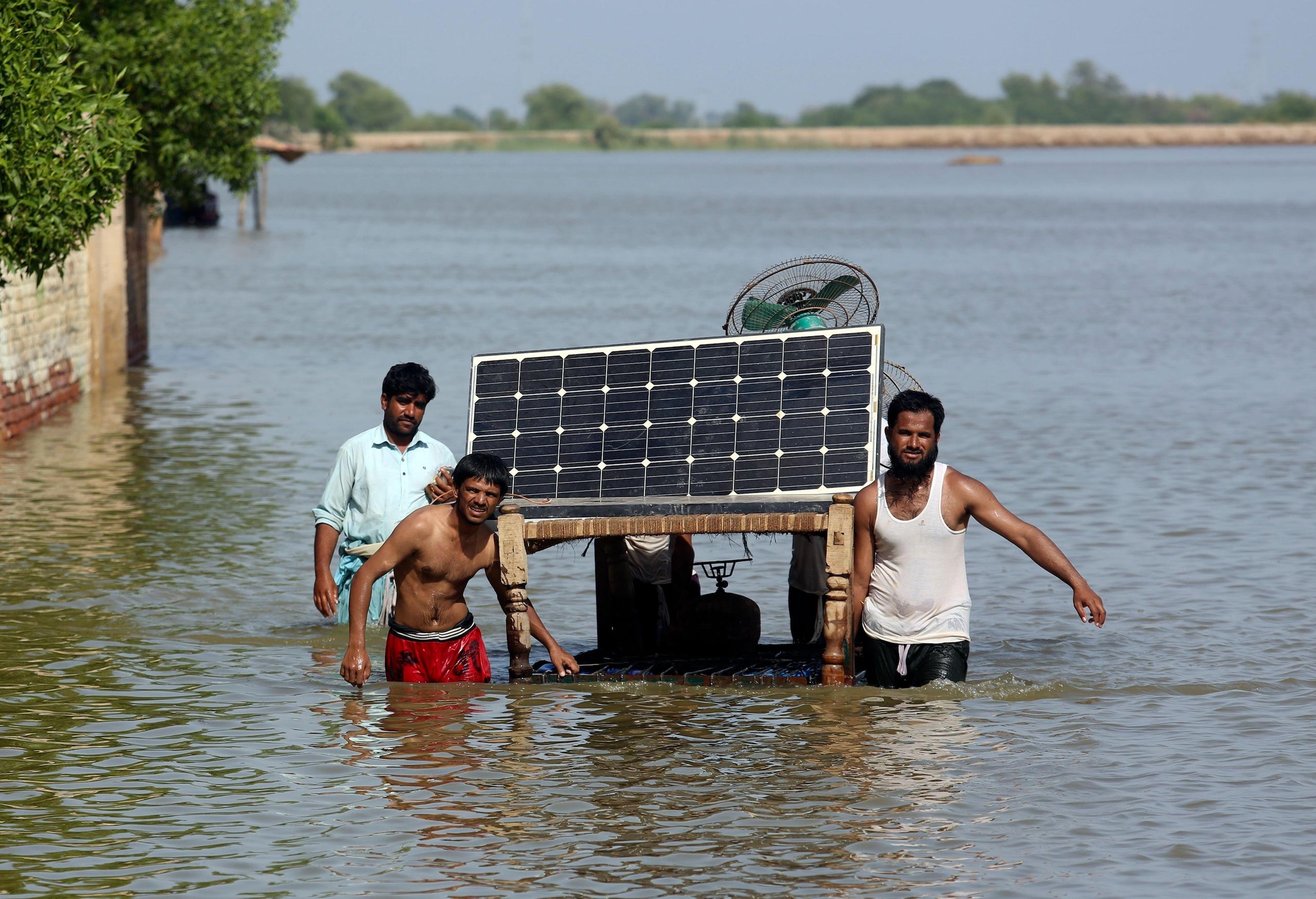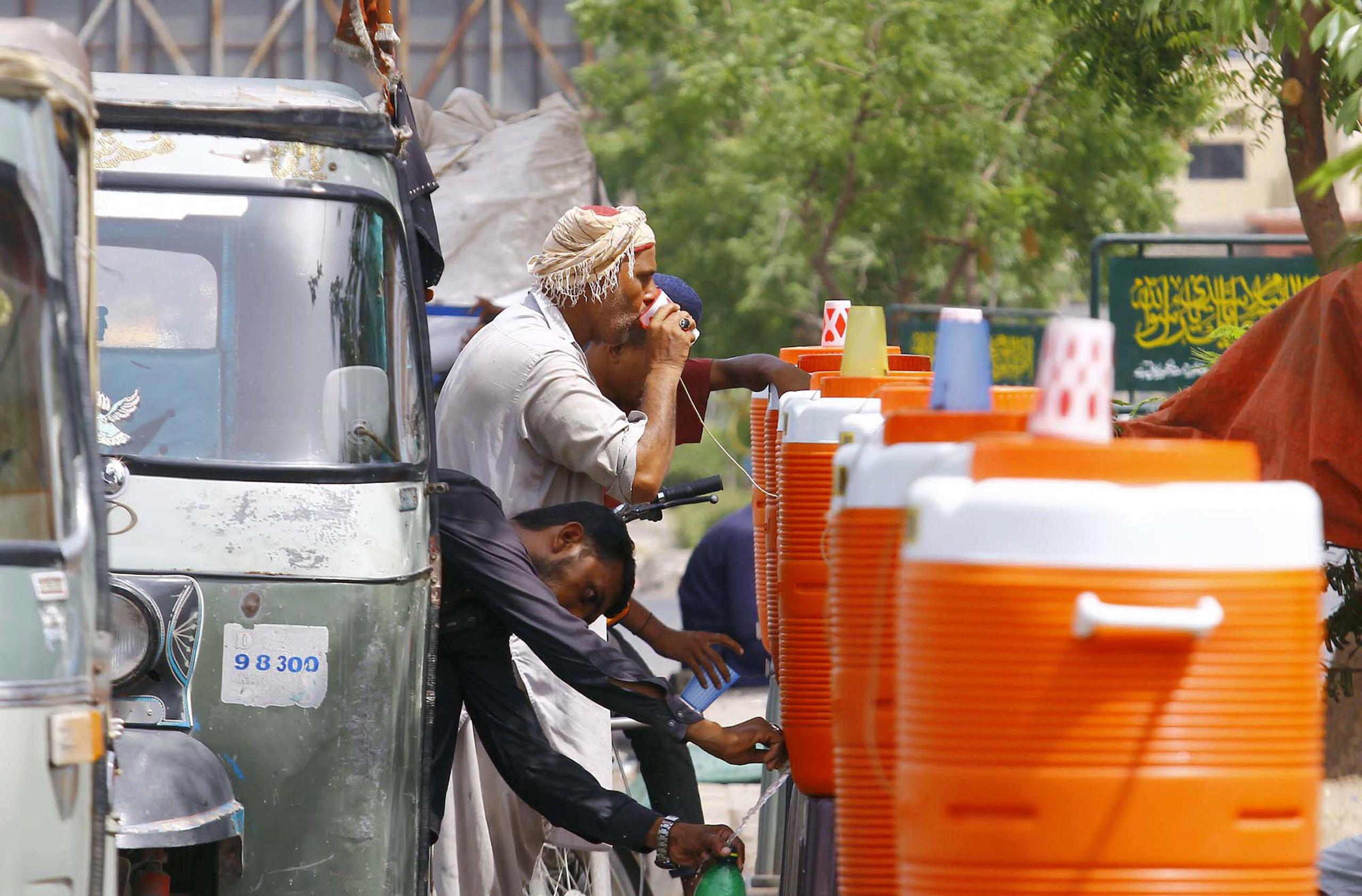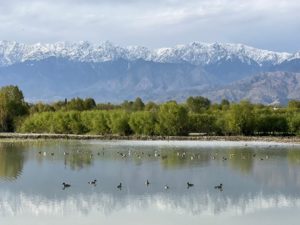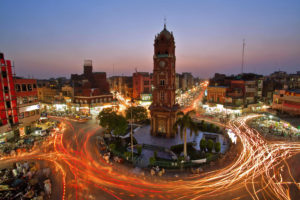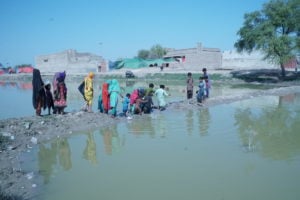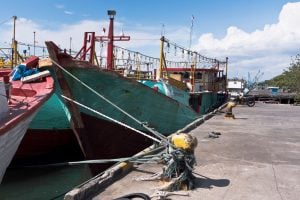One of the last things that Pakistan’s outgoing government did before it was replaced by a caretaker administration in August was to approve a National Adaptation Plan (NAP). The plan – which sets out how Pakistan aims to deal with challenges brought by climate change by coordinating between and creating institutions – was unveiled on 26 July 2023, by then-climate change minister Sherry Rehman.
The National Adaptation Plan envisages a climate-resilient Pakistan in which income inequality and social disparities are addressed. It aims to do this by strengthening the capacity of local communities to protect themselves and their environment from hazards by providing green jobs; sustainable infrastructure and services; technology and innovation; and effective collaboration between the government, private sector and civil society.
The plan largely assumes availability of foreign funds to realise these strategies, but experts who spoke with The Third Pole say that it fails to clearly lay out how financing mechanisms will be utilised.
Nonetheless, the timing of the release of the plan is apt. The climate summit COP28 is set to begin at the end of November in Dubai, where the Global Stocktake of the world’s progress in achieving its climate commitments will be presented. This will actively consider adaptation strategies for communities facing the impacts of climate change, as well as the needs of local governments.
Meanwhile Pakistan is still, to some degree, dealing with the aftermath of huge floods in 2022. The scale of the disaster was instrumental in Pakistan’s leadership at COP27 in Egypt, and possibly influenced the summit’s agreement to create a Loss and Damage Fund. This fund, if operationalised, could be a key route through which international finance could help support plans like Pakistan’s NAP.
Plan treads well-worn ground, lacks concrete action, say experts
Officials at Pakistan’s Ministry of Climate Change & Environmental Coordination, who asked not to be named, told The Third Pole they were relieved that the task of preparing a National Adaptation Plan – made possible by a USD 3 million grant from the United Nations Environment Programme – had finally been completed. Pakistan is now one of 40 countries that have created a national adaptation plan, as part of its obligations under the UN Framework Convention on Climate Change (UNFCCC).
“The very existence of this plan means that we have ticked off the list a major requirement of the UNFCCC,” said Anam Zeb, an Islamabad-based climate expert who works at the German Red Cross.
However, she argued that the plan has not substantially brought the debate forward in Pakistan. Zeb said that large sections of the plan are “almost identical” to Pakistan’s National Climate Change Policy (NCCP) from 2012; that content on disaster risk management is almost the same as what that the existing National Disaster Management Plan 2012-2022 called for; and that measures relating to water management are similar to what the National Water Policy said in 2018.
We have a practice of writing good documents and then shelving them. Let’s hope it’s different this timeUmer Karim, water resources specialist
Sobia Kapadia, an architect and urban resilience expert at the London School of Economics Gender, Justice and Security Hub, told The Third Pole that the National Adaptation Plan also lacks “clear, actionable strategies that address co-ordination issues, capacity building, resource allocations, community engagement and governance to have an efficient disaster risk management system”.
“The implementation challenges without defined clarity and mechanisms especially around governance and finances makes this framework nothing other than what was done in previous years,” she said. Kapadia argued that the NAP has largely ignored existing developmental plans, such as “the Planning Commission’s vision 2030; or Sindh Government’s vision 2025 or even the annual development plans that are linked with budgets in the fiscal year.” These developmental plans determine how the state allocates funds and resources, and for the NAP to be successful, she said, “it requires to embed itself or lead the conversation on developmental plans.”
Malik Amin Aslam, who was the prime minister’s adviser on climate change from August 2018 to April 2022, told The Third Pole that the plan lacks “out-of-the-box thinking”, and that it will struggle to benefit from the “rapidly changing global climate financing framework that is in place”.
Aslam contended that during his tenure under the Pakistan Tehreek-e-Insaf (PTI) government, the state confronted the climate crisis “without taking a penny from donors” by focusing on nature-based solutions (NBS) like the 10 Billion Tree Tsunami and the Pakistan Protected Areas Initiative. Despite nature-based solutions featuring prominently in the NAP, including as one of its 10 guiding principles, Aslam suggested that this approach was abandoned after the PTI lost power in 2022, at the “altar of petty political expediency”. Zia ul Islam, an environment expert formerly of the Pakistan Environmental Protection Agency, concurred, saying the focus has shifted “from NBS [to] loan-friendly projects in the NAP.”
Plan critiqued for lack of consultation
The content of any plan is shaped by the process of its creation, and this has been the greatest focus of criticism of the National Adaptation Plan from Pakistan’s climate experts. Imran Khalid, who works with WWF-Pakistan, raised concerns about the role of World Bank consultants in finalising the NAP, which is prominently mentioned in the introduction. “Currently, we rely heavily on consultant-led initiatives,” he told The Third Pole, and that this “may not adequately address the environmental and climate challenges facing at-risk communities”.
A senior official at the Ministry of Climate Change & Environmental Coordination, speaking on condition of anonymity, rejected this. “The data and all the material for the chapters was provided by us, [the World Bank] gave it a proper shape so that it could be submitted to the UNFCCC.”
Khalid also suggested that the plan, while “substantive”, had been created by a process that did not reflect the ‘whole-of-society’ approach that the document promised to espouse. “The broad-based consultative process – taking insights from experienced professionals, communities, academics, and the broader civil society before finalising such an important document – is missing,” he said.
Agreeing with Khalid that a more ‘bottom-up’ approach was needed, Rafay Alam, an environmental lawyer, told The Third Pole: “In an ideal world a ‘national’ adaption plan would have evolved from the ground (provinces) up instead of top (federation) down.” This, he explained, is because the main sectors mentioned in the NAP, namely irrigation, agriculture, land and watershed management, are matters of provincial governance under the Pakistani constitution.
We need to spend our own money smartly, rather than just waiting for international support to materialiseKashmala Kakakhel
Alam said he was unsure if the provinces had agreed to the responsibilities assigned to them under the plan, such as providing funding. “As far as I know, this has not been the case,” he said, adding that funding for provincial adaptation initiatives requires budget approvals that are sanctioned by the provincial assemblies. “Since this hasn’t happened either, the NAP essentially passes the financial responsibility of expensive adaptation initiatives to provinces that have not made budget allowances for them.”
Zeb argued that what matters most is political will, not how “well written policies or plans may be”. Zeb said that provincial-level climate change policies, such as those of Sindh and Khyber Pakhtunkhwa provinces, had not been implemented after being approved hastily in July 2022, just before the dissolution of the respective assemblies.
Umer Karim, an agriculture and water resources specialist based in Karachi, agreed: “We have a practice of writing good documents and then shelving them. Let’s hope it’s different this time.”
Karim highlighted drainage as another notable omission in the National Adaptation Plan. “Our agriculture and the entire food system can only survive climate change-related flooding if we have efficient and regularly maintained storm water evacuation systems.” Blindness to this issue, he argued, creates additional problems for the environment, as effluent discharged into the Indus from cities like Sukkur and Rohri pollutes the habitat of the Indus river dolphin, while sewage from Lahore is released into Ravi River, which when it reaches Sutlej is used for drinking and agricultural purposes.
Questions of finance
The National Adaptation Plan mentions the creation of a National Climate Change Fund (NCCF) to provide seed funding for adaptation projects. “How this will be made available and how will it be designed to ensure that it trickles down to the local level [is something we don’t know],” said Zeb.
Zia ul Islam said that the capacity of relevant institutions at the provincial level is limited, both “in terms of logistics and technical understanding, particularly financing”.
Climate finance expert Kashmala Kakakhel argued that the major challenge in implementing Pakistan’s National Adaptation Plan lies less in financing than improving existing practices. “We have a fair idea of which geographies and sectors are more prone to climate impacts; the planning departments of provinces need to start taking more ownership of how projects are designed and approved. We need to spend our own money smartly, rather than just waiting for international support to materialise.”
